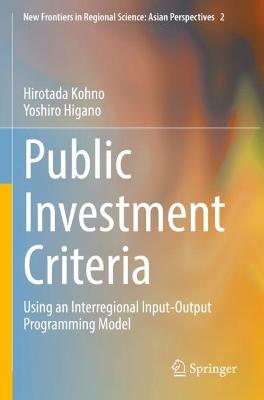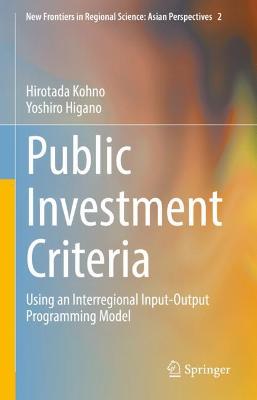Inflation Dynamics in South Africa
 -15%
portes grátis
-15%
portes grátis
Inflation Dynamics in South Africa
The Role of Thresholds, Exchange Rate Pass-through and Inflation Expectations on Policy Trade-offs
Ndou, Eliphas; Gumata, Nombulelo
Springer International Publishing AG
07/2018
525
Mole
Inglês
9783319835662
15 a 20 dias
739
Descrição não disponível.
Chapter 1. Introduction.- Chapter 2. The Ball approach to disinflation episodes, output costs and sacrifice ratios in South Africa.- Chapter 3. The output and inflation trade-off in South Africa.- Chapter 4. Persistent exchange rate volatility on the Taylor curve. Chapter 5. Inflation and non-linear shock inflation effects on inflation volatility.- Chapter 6. Exchange rate volatility shock effects on inflation volatility.- Chapter 7. Does the volatility of the R/US$ exchange rate threshold exert non-linear effects on inflation?.-Chapter 8. Persistent and non-persistent exchange rate depreciation effects on inflation. Chapter 9. Relative services price dispersion, trend inflation and inflation volatility.- Chapter 10. Negative terms-of-trade shock, the real effective exchange rate and repo rate adjustments.- Chapter 11. Do fiscal policy variables drive inflation in the same direction? Chapter 12. What would inflation and repo rate be in the absence of increased government expenditure?.- Chapter 13. Labour productivity, unit labour costs impact on inflation: what are the implications for monetary policy?.- Chapter 14. Labour market conditions, policy rate and positive inflation shocks.- Chapter 15. Does world import growth amplify domestic inflation responses to inflationary shocks?.- Chapter 16. Where does the exchange rate pass-through to import price inflation threshold lie?.- Chapter 17. GDP growth threshold and asymmetric exchange rate pass-through to import prices.- Chapter 18. Inflation rate and R/US$ depreciation shocks on import price inflation: Inferences from deviations from the 6 per cent inflation rate.- Chapter 19. The inflation-finance-growth nexus: where does the inflation threshold lie?.- Chapter 20. The output-gap, exchange rate depreciation shock and inflation: Non-linear effects and implications for monetary policy.- Chapter 21. Do economic growth regimes impact the pass-through of exchange rate shocks to inflation?.- Chapter 22. GDP growth threshold and non-linear effects of repo rate shocks.- Chapter 23. Asymmetric effects of the repo rate and inflation rate shocks on economic growth.- Chapter 24. Do deteriorating business cycles indicators and tight credit conditions affect the repo rate adjustment to positive inflation shock?.- Chapter 25. Rand US dollar exchange rate pass-through and the inflation environment.- Chapter 26. Sovereign spreads and non-linear responses of inflation to the R/US$ exchange rate depreciation shocks.- Chapter 27. Do credit regimes play a role in the pass-through of the exchange rate depreciation shocks to inflation?.- Chapter 28. The propagating effects of inflation risk factors and the implications for the inflation outlook.- Chapter 29. Upside risk factors to the inflation outlook and long-term inflation expectations.- Chapter 30. Inflation expectations, adverse aggregate supply shock and long-term inflation expectations.- Chapter 31. Wage increases in excess of six per cent, inflationary dynamics and expectations.-
Este título pertence ao(s) assunto(s) indicados(s). Para ver outros títulos clique no assunto desejado.
Inflation;Disinflation;Taylor Curve;Garch methodology;Supply shocks;Volatility;Price dispersion;Tsay nonlinear approach;GDP;Monetary policy;Exchange rate;Fiscal policy shocks
Chapter 1. Introduction.- Chapter 2. The Ball approach to disinflation episodes, output costs and sacrifice ratios in South Africa.- Chapter 3. The output and inflation trade-off in South Africa.- Chapter 4. Persistent exchange rate volatility on the Taylor curve. Chapter 5. Inflation and non-linear shock inflation effects on inflation volatility.- Chapter 6. Exchange rate volatility shock effects on inflation volatility.- Chapter 7. Does the volatility of the R/US$ exchange rate threshold exert non-linear effects on inflation?.-Chapter 8. Persistent and non-persistent exchange rate depreciation effects on inflation. Chapter 9. Relative services price dispersion, trend inflation and inflation volatility.- Chapter 10. Negative terms-of-trade shock, the real effective exchange rate and repo rate adjustments.- Chapter 11. Do fiscal policy variables drive inflation in the same direction? Chapter 12. What would inflation and repo rate be in the absence of increased government expenditure?.- Chapter 13. Labour productivity, unit labour costs impact on inflation: what are the implications for monetary policy?.- Chapter 14. Labour market conditions, policy rate and positive inflation shocks.- Chapter 15. Does world import growth amplify domestic inflation responses to inflationary shocks?.- Chapter 16. Where does the exchange rate pass-through to import price inflation threshold lie?.- Chapter 17. GDP growth threshold and asymmetric exchange rate pass-through to import prices.- Chapter 18. Inflation rate and R/US$ depreciation shocks on import price inflation: Inferences from deviations from the 6 per cent inflation rate.- Chapter 19. The inflation-finance-growth nexus: where does the inflation threshold lie?.- Chapter 20. The output-gap, exchange rate depreciation shock and inflation: Non-linear effects and implications for monetary policy.- Chapter 21. Do economic growth regimes impact the pass-through of exchange rate shocks to inflation?.- Chapter 22. GDP growth threshold and non-linear effects of repo rate shocks.- Chapter 23. Asymmetric effects of the repo rate and inflation rate shocks on economic growth.- Chapter 24. Do deteriorating business cycles indicators and tight credit conditions affect the repo rate adjustment to positive inflation shock?.- Chapter 25. Rand US dollar exchange rate pass-through and the inflation environment.- Chapter 26. Sovereign spreads and non-linear responses of inflation to the R/US$ exchange rate depreciation shocks.- Chapter 27. Do credit regimes play a role in the pass-through of the exchange rate depreciation shocks to inflation?.- Chapter 28. The propagating effects of inflation risk factors and the implications for the inflation outlook.- Chapter 29. Upside risk factors to the inflation outlook and long-term inflation expectations.- Chapter 30. Inflation expectations, adverse aggregate supply shock and long-term inflation expectations.- Chapter 31. Wage increases in excess of six per cent, inflationary dynamics and expectations.-
Este título pertence ao(s) assunto(s) indicados(s). Para ver outros títulos clique no assunto desejado.







